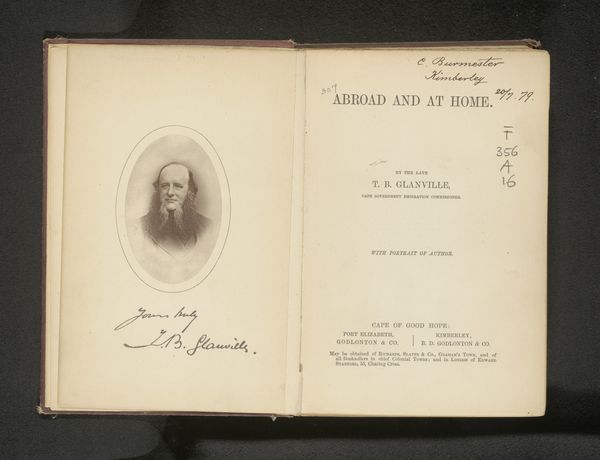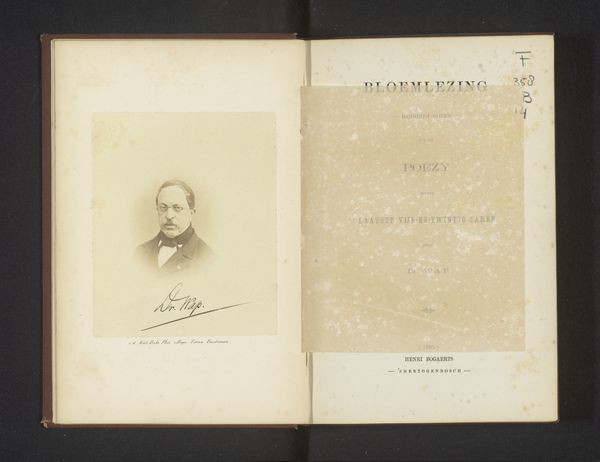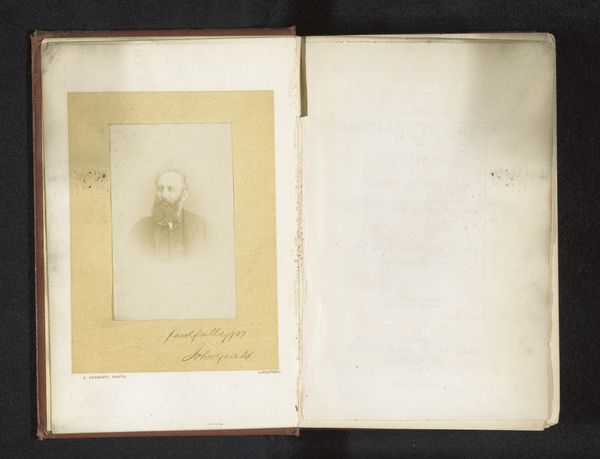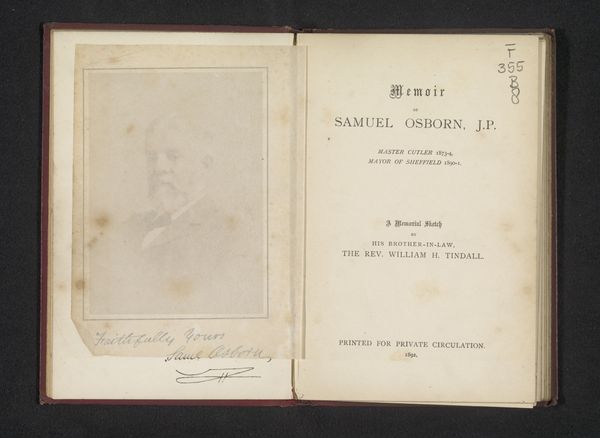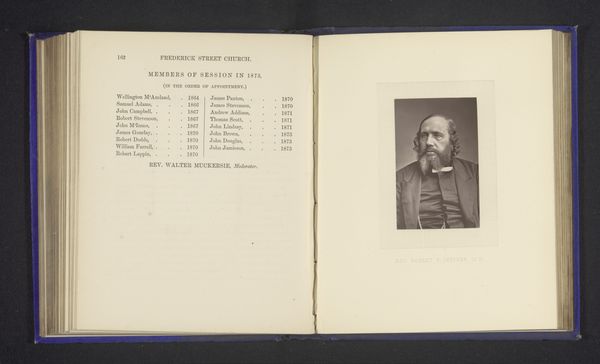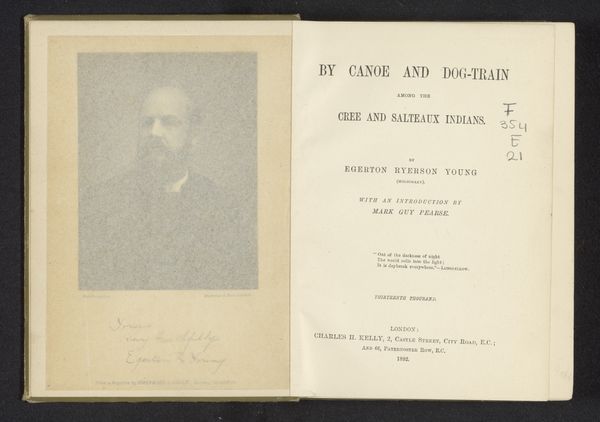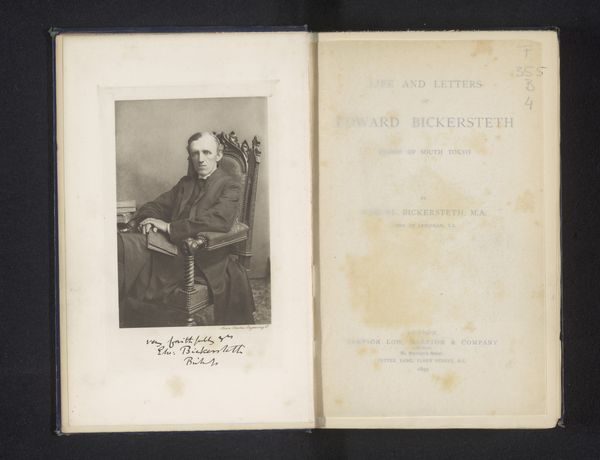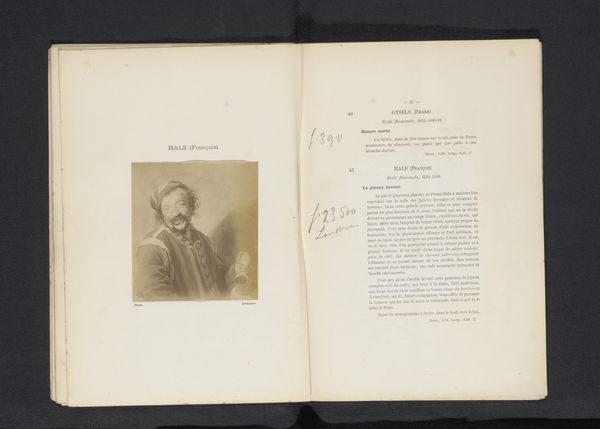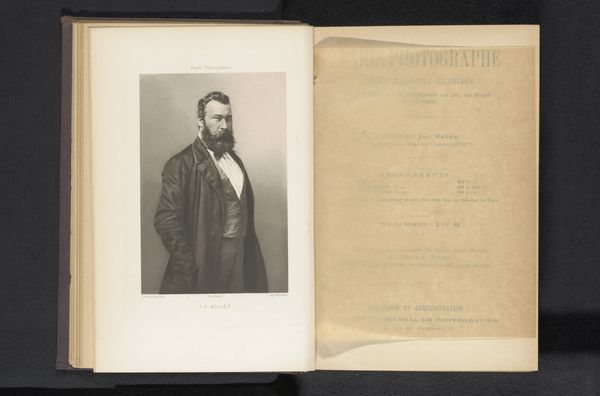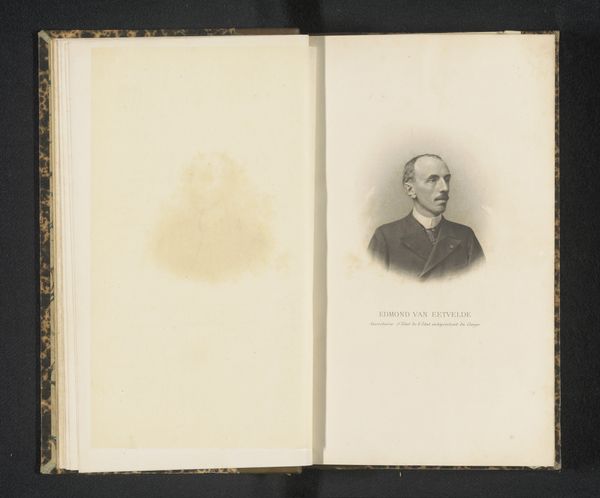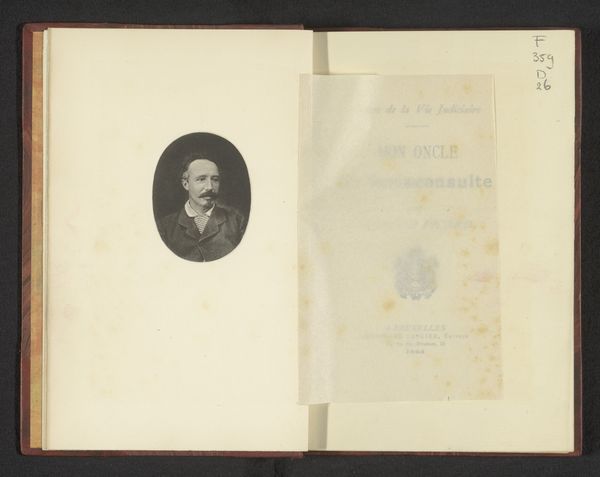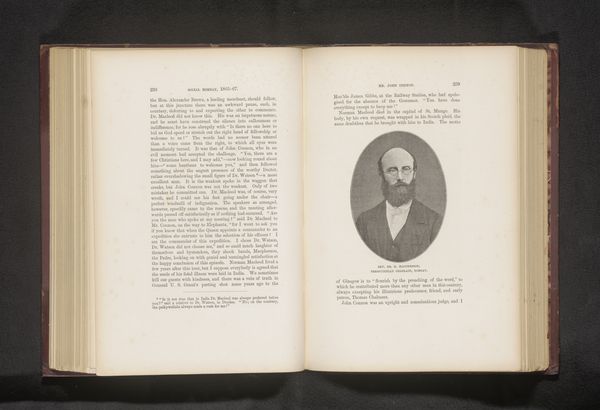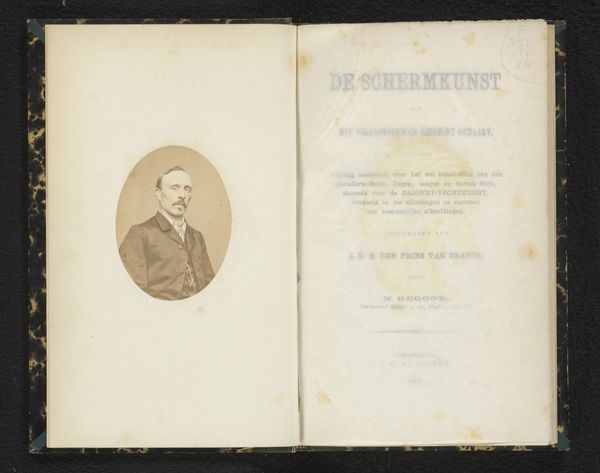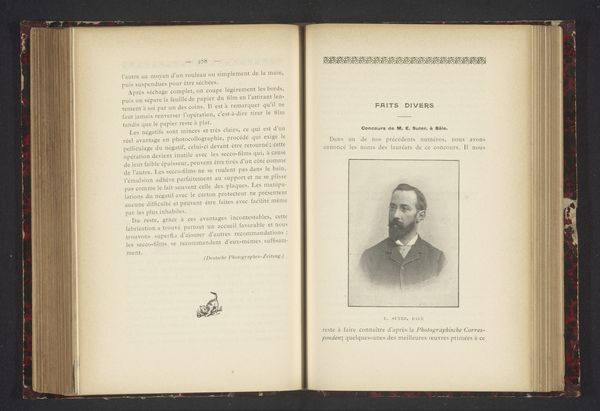
print, photography
#
portrait
# print
#
book
#
photography
Dimensions: height 80 mm, width 60 mm
Copyright: Rijks Museum: Open Domain
Editor: We're looking at a print titled "Reproductie van een foto van een portret van William Smith," created before 1876 by Henry Adlard. It depicts an open book; on the left page is Smith’s portrait and signature, and the right displays the book’s title, "The History and Antiquities of Morley." There's a real sense of history and formality here. How would you interpret this piece? Curator: Considering this image through a historical lens, it’s interesting how it mediates between public image and private inscription. It’s not simply a portrait, but a *reproduction* of a portrait included within his own publication. We see here the author deliberately constructing his public persona. What does the inclusion of his signature signify to you? Editor: Perhaps it's emphasizing authorship and personal investment in the work? Adding a layer of authenticity? Curator: Precisely! The photograph is reproduced, arguably making it less unique. However, the addition of a reproduction of his handwriting pushes against the reproducibility implied in print culture, in a way marking Smith as a figure whose authority could be transferred through image and text. How does that impact how you understand its function? Editor: That's insightful. The print becomes more than just a portrait; it’s about how identity and authority were constructed and circulated in 19th-century Britain, using developing print and photographic media. Curator: Indeed. The book becomes a stage on which Smith acts as the author and the character in one; that stage is, in turn, put on display to the viewer. How do institutions of history and publication reinforce personal stories? Editor: This discussion has highlighted how something as seemingly straightforward as a portrait reproduction can reveal much about societal values, like authorship, authority and class. Curator: And hopefully reminds us that all images function within a much broader network of institutional power and social meanings.
Comments
No comments
Be the first to comment and join the conversation on the ultimate creative platform.
